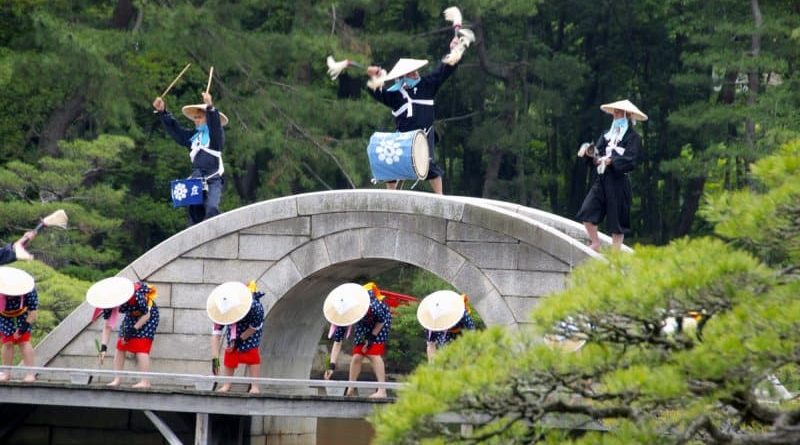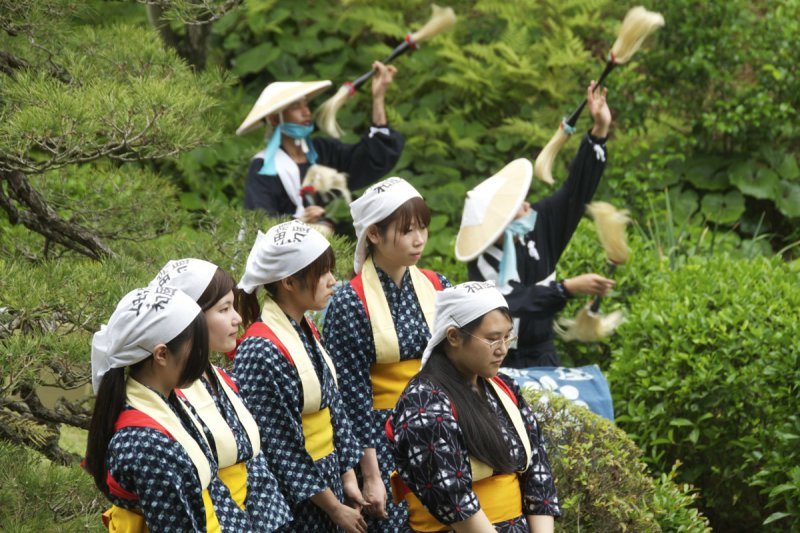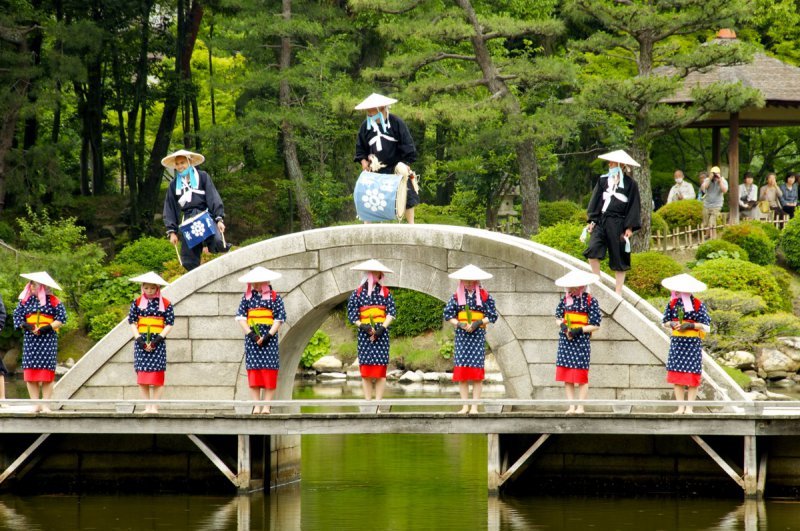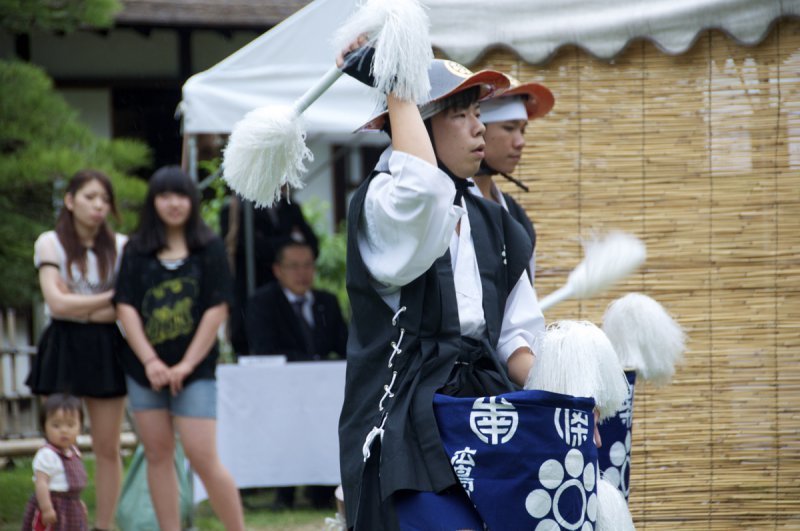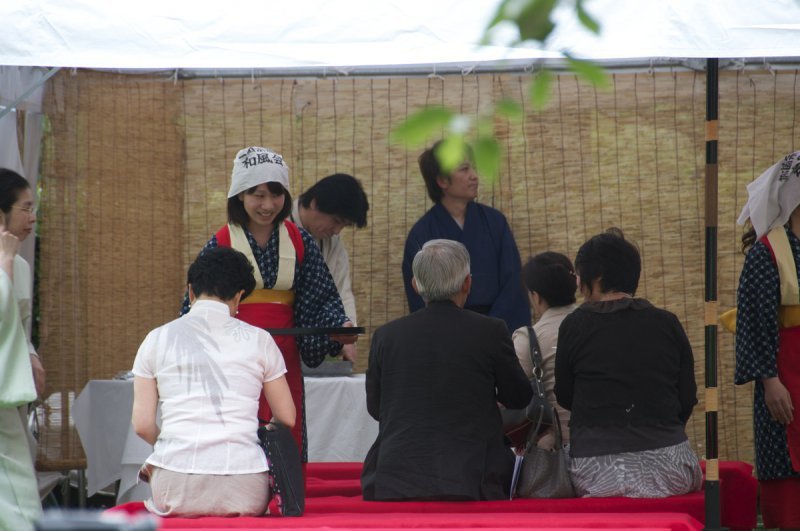Ritual Rice Planting at Shukkei-en Garden
Since its designation as a UNESCO Intangible Cultural Heritage of Humanity in 2011, the Mibu-no-Hanadaue ritual rice planting re-enactment held in Chiyoda (Kita-hiroshima) at the beginning of June each year gets a lot of press and attracts a lot of people. If, however, you miss the bulls, drums and dancing at Mibu, a week later, you can observe a smaller event right in the center of Hiroshima city.
The event isn’t as colorful (or as long) as that in Mibu, but it is well worth going to take a look. Another bonus is that, despite its central location, it doesn’t get too crowded. The rice planting is done by a group of young ladies in a corner of Shukkei-en Garden, where the small yuunenjyou rice plot of former feudal lords is located. They are accompanied by members of the Shinjo Provincial Art Preservation Committee who re-enact the elaborate Hayashida dance, in which drummers twirl and toss fluffy batons in the air while other play music on flutes.
Once the rice seedlings have been planted, after a short break, the rice planting maidens and the musicians perform once more, this time using the stone bridge that spans Shukkei-en‘s central pond.
To close out the festivities the preservationists change into more military garb and perform the Nanjo Odori dance which dates from the sengoku warring states period. The dance is said to have been devised to ease the passage of the spirits of dead Nanjo clan soldiers killed when Motoharu Kikkawa, one of the sons of the great local clan leader Motonari Mori, took Ueshi Castle (in present day Tottori Prefecture). Kikkawa is said to to have infiltrated the castle, in true Trojan style, by exploiting the leader of the Nanjo clan’s love of dance by disguising his soldiers as dancers.
Formal tea ceremonies are held in the Seifukan tea house throughout the day, but you can also opt for a more relaxed cuppa served by the young ladies who planted the rice.
The ritual rice planting and tea ceremony event is held on the second Sunday of June at Shukkei-en Garden. Click here for more details.


